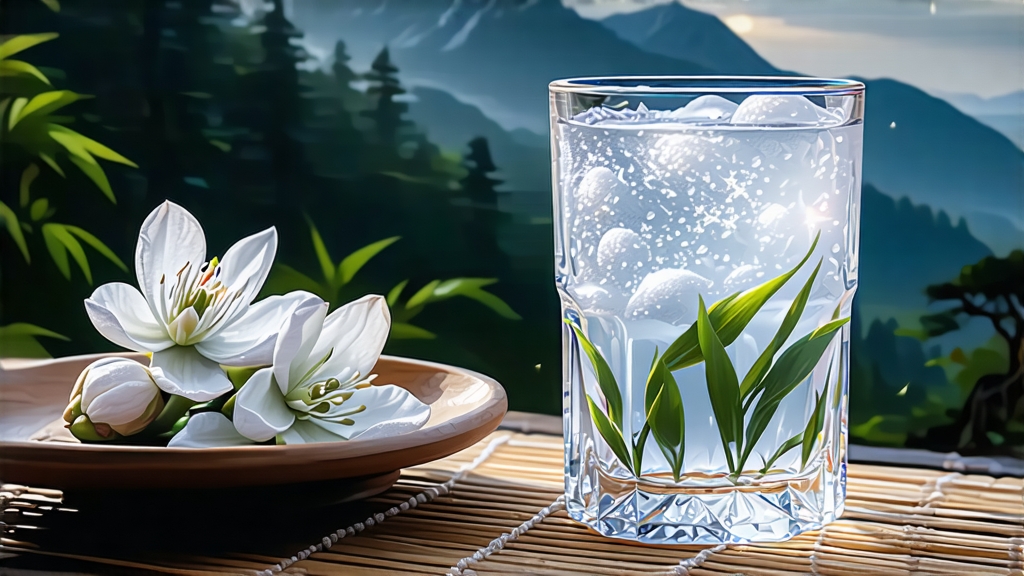
Among the six great families of Chinese tea, white tea is the least theatrical yet the most elusive; it is oxidised by time rather than by fire, and its highest expression is Bai Hao Yin Zhen—“Silver Needle” literally, “White Down Needle” poetically. To international drinkers who meet it first in a specialty café or a quiet teahouse, the experience is often one of startled understatement: a liquor so pale it resembles melted moonlight, a fragrance that suggests fresh alfalfa, ripe melon and mountain air at dawn, and a finish that lingers like a soft bell. This essay invites you to follow the needle from its historical roots to your own teacup, tracing the invisible thread that links Song-dynasty court tribute to twenty-first-century slow-food culture.
-
Historical silhouette
The written record begins in the Song dynasty (960-1279) when the Huizong Emperor—an artist on the throne—praised “white down tea” whose buds, he wrote, “gleam like silver frost.” At that stage the leaves were probably compressed into cakes; the now-familiar loose-needle style appears during the late Ming, when the lifting of the cake-tea monopoly allowed Fujian farmers to sell their spring tips directly to coastal merchants. By the early Qing, Fuding and Zhenghe counties had become the needle’s twin cradles, and the tea rode the same junks that carried Dehua porcelain to Java, Amsterdam and eventually London, where Victorian catalogues listed it as “Flowery Pekoe Tips” at prices higher than first-flush Darjeeling. In modern China the 1972 gift of fifty grams of Yin Zhen to President Nixon—part of the panda-diplomacy package—cemented its status as national treasure, while the 2008 EU recognition of “Fuding White Tea” as a Protected Geographic Indication opened European markets to authentic leaf. -
Terroir and micro-seasons
Authentic Silver Needle is picked only between mid-March and early April, when the air is still cool enough to keep the down tight around the bud. Two micro-regions argue over primacy:- Fuding Da Bai Hao: big-bud varietal developed in 1857, thriving on the granitic soils of Taimu Mountain; the buds can reach 3 cm, plump as quills, and carry a higher amino-acid load that translates into sweetness.
- Zhenghe Da Bai: slightly smaller bud, picked a week later because of higher elevation; the leaf yields a deeper, hay-like aroma and a liquor the colour of pale chardonnay.
Purists treat them as yin and yang: Fuding for fragrance, Zhenghe for body. Both, however, share the same climatic blessing: the East China Sea’s morning fog that rolls inland, diffusing sunlight and slowing photosynthesis so that catechins convert gently into volatile floral compounds.
-
Craft: the art of doing almost nothing
Unlike green tea, Silver Needle is never pan-fired; unlike black tea, it is never rolled. The entire craft is a choreography of moisture, temperature and patience.
Step 1: Pluck at dawn, one tender bud per snap, laid horizontally in shallow bamboo baskets lined with gauze to prevent bruising.
Step 2: Wither indoors for 24–36 h on water-reed trays stacked like sliding drawers; ambient temperature 22 °C, humidity 65 %. Enzymes begin to oxidise the outer cell walls, turning grassy aldehydes into sweet alcohols.
Step 3: Move the trays into weak late-afternoon sunlight for a further 4–6 h, a phase locals call “lifting the fragrance.” The buds lose roughly 70 % moisture, but the down acts as a micro-climate, shielding the inner tissue from over-oxidation.
Step 4: Bake-dry at 40 °C for twenty minutes, just enough to drop residual moisture to 5 %. The goal is preservation, not transformation; any hotter and the down would yellow, the liquor flatten.
Step 5: Rest for at least three weeks so that trapped internal moisture migrates outward, “harmonising” the leaf. Master crafters compare this to letting a violin sit after gluing: the tone becomes rounder. -
Grading and authenticity traps
Because the wholesale price of top-grade Fuding Silver Needle can exceed USD 1,